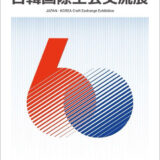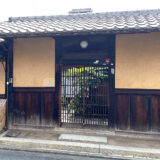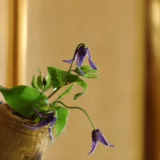Kirikane1 is a traditional Japanese applied fine art technique developed to express the “sublimity of Buddhism” by depicting patterns such as clothing and accessories on Buddhist statues and paintings. It is a technique unique to Japan and is still practiced today. Kirikane involves cutting thin strips of gold, silver, or platinum leaf, which are then meticulously applied to create intricate patterns using brushes and glue.

Kirikane was believed to have been introduced to Japan in the mid-7th century, along with Buddhist sculptures and paintings from the Korean Peninsula and mainland China. The oldest surviving Kirikane work in Japan is believed to be in the Tamamushi Shrine at Horyu-ji Temple2.
During the Heian (794-1185) to Kamakura periods (1185-1333 ), Kirikane flourished in Japan with the rise of Buddhism. However, it gradually declined during the Muromachi(1333-1573 ) and Edo periods (1603-1868) due to the decline of Buddhist art and the popularity of gold paste patterns replacing gold leaf. In later years, Kirikane became a technique passed down to only a select few individuals, with the support of significant temples like Higashi Honganji Temple3 and Nishi Hongwanji Temple4. However, in modern times, there has been a resurgence of interest in preserving this technique not only as a form of Buddhist art but also as a craft art. As a result, three individuals have been recognized as Important Intangible Cultural Heritage holders (Living National Treasures)5.

A sheet of gold leaf used in Kirikane is fragile, measuring one ten-thousandth of a millimeter (10μm), and can easily be blown away with a gentle breath. This delicate leaf is cut with a bamboo sword, approximately 20 millimeters thick, and dried for 5 to 10 years. The eye estimates the thickness of the leaf, and at times, it is cut even thinner than human hair.

Once the leaf has been cut, it is meticulously layered using brushes and glue, creating an incredibly intricate decoration. The patterns depicted in Kirikane often draw inspiration from natural phenomena, plants, animals, and everyday objects, incorporating traditional Japanese motifs. Depending on the viewing angle, the patterns change with the play of light, presenting various expressions each time.

Click here to see the works of Kirikane artist Ai Imamura




